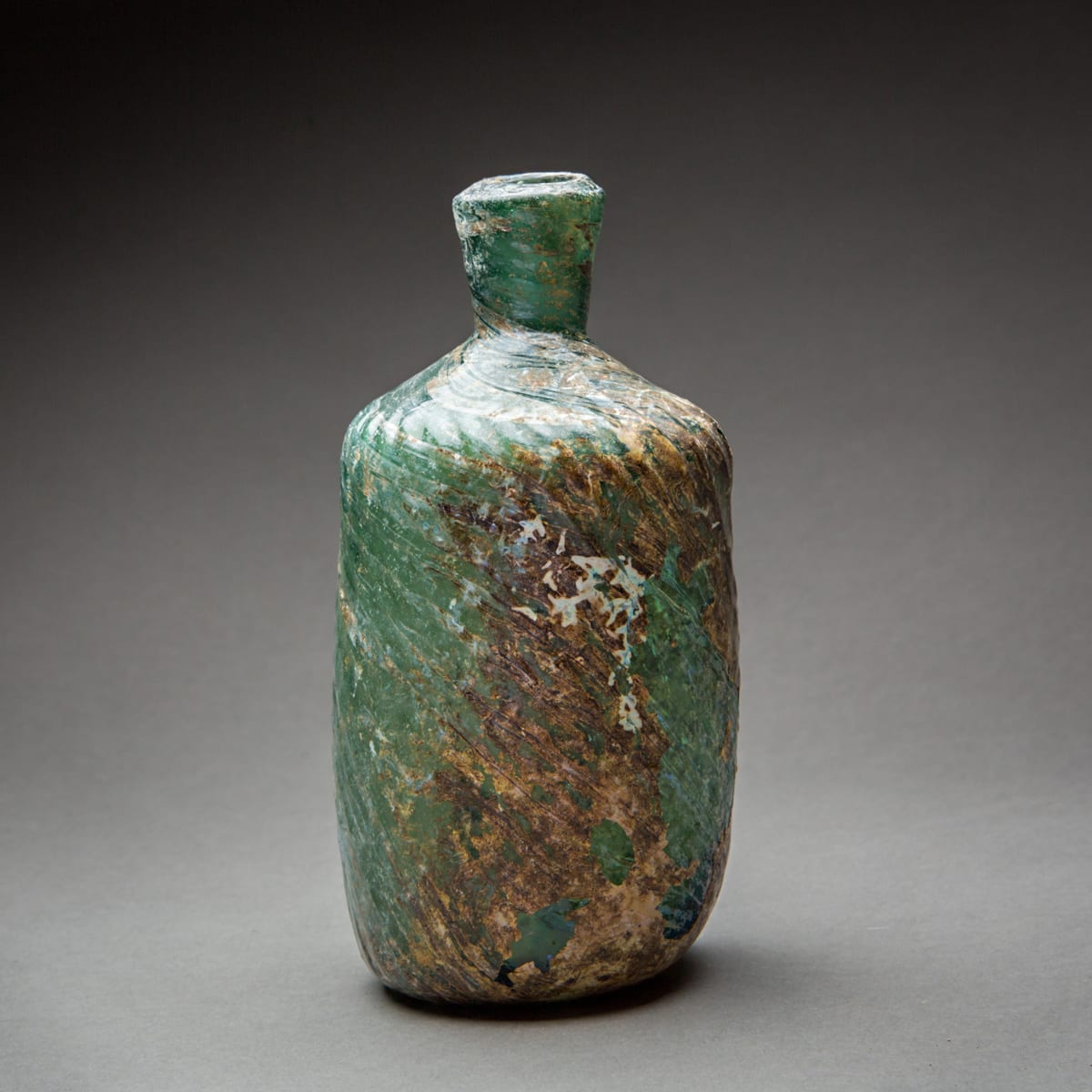Large Green Glass Bottle, 800 CE - 900 CE
Glass
height 15.2 cm
height 6 in
height 6 in
SF.291
This Bottle has an irregular cylindrical body, a slightly curved shoulder, a short flared neck that bulges at the opening and a slightly kicked base. Its decoration consists the common...
This Bottle has an irregular cylindrical body, a slightly curved shoulder, a short flared neck that bulges at the opening and a slightly kicked base. Its decoration consists the common vertical ribbed motif which here is twisted clockwise outside the mold. Although the decoration might be faint, because the finished object was always larger than the interior of the mold, it survived to a greater extent. The object is in good condition and is partially weathered, resulting in a greyish patina.
The discovery in the first century BC, that molten glass could be formed by inflation was soon followed by the discovery that it could be formed and decorated in a single operation by inflating it in a mold. After their introduction by the Romans in the early first century AD, molds have been used continuously by glassworkers in Western Asia, Egypt and many other regions across the world.
Objects of this kind were produced to hold precious liquids such as perfumes and oils. It is believed that the decoration was designed to make the content easier to hold.
The discovery in the first century BC, that molten glass could be formed by inflation was soon followed by the discovery that it could be formed and decorated in a single operation by inflating it in a mold. After their introduction by the Romans in the early first century AD, molds have been used continuously by glassworkers in Western Asia, Egypt and many other regions across the world.
Objects of this kind were produced to hold precious liquids such as perfumes and oils. It is believed that the decoration was designed to make the content easier to hold.



